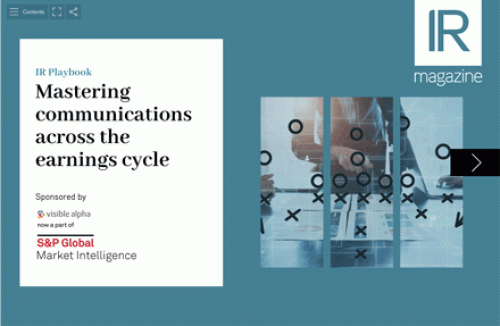Can you describe CDSB and its role in ESG reporting?
CDSB is an international consortium of business and environmental NGOs committed to aligning the disclosure of environmental information in mainstream corporate reports such as annual reports, 10K filings and integrated reports. We offer firms a framework for reporting environmental information with the same rigor as financial information. The CDSB Reporting Framework is a collection of best practices from financial reporting, such as IFRS, and environmental reporting standards, such as the Greenhouse Gas (GHG) Protocol.
Our aim is to contribute to building a more sustainable and resilient financial system so we focus on corporate reporting to an investor audience. To reach a mainstream investor audience, it is crucial that companies provide material environmental and climate change information in their annual reports. It is, of course, also important to report to other stakeholders, but we focus on reporting through annual reports given our intended primary audience is the investor.
How do you approach ESG reporting?
We don’t set our own data requirements. Instead, we reference existing financial and environmental reporting methodologies as the sources of the information to be included in mainstream reports, and we package it in a way that is suitable for investor-oriented reporting.
As such, you will find elements of IFRS, as well as reporting provisions such as the CDP questionnaires and the Global Reporting Initiative (GRI) standards, or methodologies such as the GHG Protocol or the CEO Water Mandate, which are often cited as the de-facto methodologies in their fields. These existing methodologies define what to report. The value of the CDSB Framework lies in how to report this information.
Given that several organizations provide ESG standards, is there standardization among them?
There are two prominent ESG standardization projects underway. The first is a joint project between the CDSB and SASB. The market has cited a need for practical guidance for companies to follow when disclosing climate-related financial risks in their company reports. The CDSB and SASB have come together to bridge this gap and together represent the effective solution to implementing the Task Force on Climate-related Financial Disclosure recommendations for companies across multiple jurisdictions, industries and sectors.
The second project is the Corporate Reporting Dialogue, which is made up of leading international corporate reporting standard setters and framework providers trying to achieve dialogue and alignment. As an incentive convened by the International Integrated Reporting Council (IIRC), participants include CDP, CDSB, GRI, IIRC and SASB.
When companies publish reports on ESG initiatives, who generally should complete these reports?
Company boards should be the ones overseeing the effective production of such reports. Traditionally, ESG reporting has been considered a CSR issue and something that has been siloed in sustainability departments. To effectively communicate to a mainstream audience, it is important to go beyond sustainability departments and bring others from the organization into the reporting process. This could include governance, compliance, investor relations and finance colleagues, among others.
What advice can you offer professionals to help formulate their own reporting actions?
First, think about the reason for the move to reporting: why are you doing this? There is a wide range of ESG reporting methodologies, standards and frameworks in the market, and it can be confusing.
Second, establish a reporting strategy. If the company is starting from very little or no ESG reporting, it can take a bit of time to get up to speed, and a reporting strategy can help create a set of steps between now and the end-goal. This strategy should be set for the next reporting cycle, and for a few years into the future as well.
This interview appeared in Corporate Secretary’s special report on ESG engagement, reporting and integration










